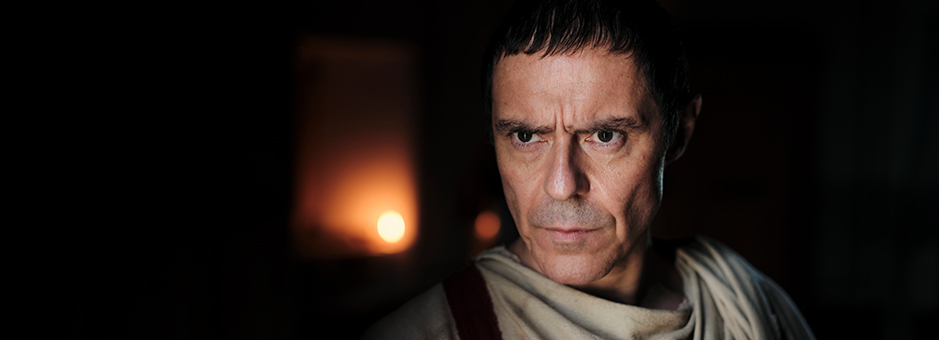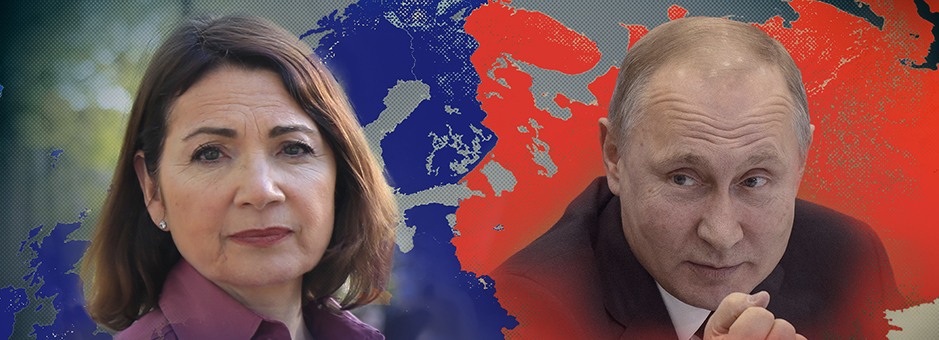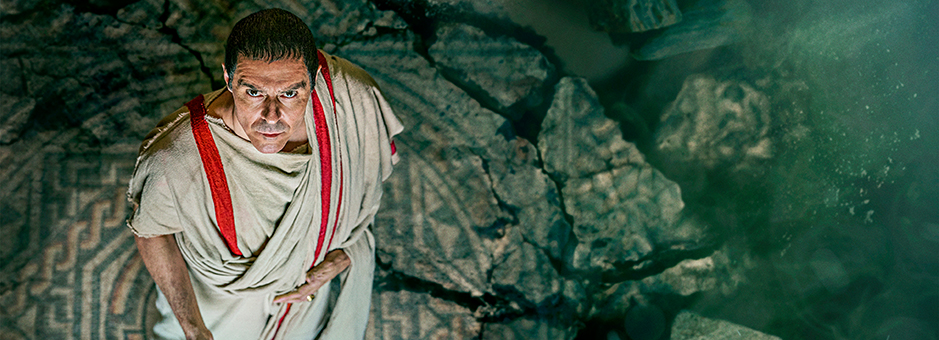Meet The Colourist
Sonny Sheridan
Senior Colourist, ENVY, London
After an early career as a child actor, Sonny Sheridan looked to a career in production and post-production. Starting as a runner, he worked his way up to edit assistant before meeting colourist, Aidan Farrell, where his colour grading journey began.
Sonny spent eight years as Farrell’s assistant first at Molinare and then The Farm (now Picture Shop), observing and learning on the job, performing basic grades before getting the opportunity to grade music promos.
His big break came with Craig David: Live at Wembley, which lead to further work grading music content for artists including Madonna, Katy Perry and Oasis. Since then, Sonny has worked on a wide range of projects including documentaries, scripted drama and music concerts. Sonny thrives on projects with unique looks and loves collaborating with DoPs, directors and producers to visualise and create different looks.
Sonny recently graded the BBC series, Julius Caesar: The Making of a Dictator and the BBC documentary, Living Next Door to Putin. Other key projects include Made in Chelsea (2012), Stan Lee’s Lucky Man (2016), Informer (2018), and the BAFTA award-winning, I Am Ruth (2021). Sonny also won an RTS Award in 2011 for Picture Enhancement for his work on TV film, Eric and Ernie.
Tell us more about your career as a child actor?
I grew up in Islington where my Mum sent me to a local drama school. My sisters went to the same school and were not keen so I wasn’t sure if it would be for me. Still, I thought I would give it a go.
We did a lot of improvisation, and it turned out I was quite good at imitating an angry young man. From there, I was able to get in front of lots of casting directors who would come and watch us improvise. And that’s how it started.
I was in Grange Hill, as an extra, and then I did The Bill, London’s Burning, Harry Enfield and a few others. I kind of fell into it – it wasn’t a passion or a love, it just happened. It was fun, but I gave it up quite quickly.
Did it influence your journey into post?
Yes, absolutely. One of the agents’ husbands was a DoP, which really interested me. I mentioned it to someone at the school and said I’d like to get into production. She directed me to Jacqui James who, it turned out, lived at the bottom of my road and worked at Molinare. I rocked up to meet her and, having just come back from the West Indies, I had my West Indies cap on. Jacqui, being Antiguan, noticed this straight away. I am also half Antiguan, so we hit it off and I got the job there and then.
Of course, I didn’t know anything about post at the time. I walked in as a runner and was making tea and coffee and delivering sandwiches, but I was interested to see what was happening and learn more.
Tell us more about how you ended up as Aidan Farrell’s assistant?
My first memory of meeting Aidan was in my early days as a runner. I was taking beers down to his suite at 9am after the team had worked through the night on a grade. But, it was a little later that I got to know Aidan a bit better and it wasn’t long before I started to assist him as a tape operator.
I always thought I would become an editor, but I quickly realised that it wasn’t for me and my interest in grading grew as I started to watch and learn from Aidan – it was quite mesmerising.
He was doing a lot of music promos back then, right in the prime of the Brit Pop era, with artists like Blur, Oasis, Annie Lennox, Dave Stewart, Mick Jagger. There were so many jobs coming through the doors, and these people would be in the suite with us. It was crazy. And there I was, sitting in the background, a little overwhelmed, just observing and taking it all in. It really was rock n’ roll.
I was part of The Farm for a long time. When Picture Shop acquired them in 2019, it felt like the end of an era for me, and it soon became clear that it was the right time to look for something new.
ENVY came along and I am honestly so happy and grateful to be here. I joined because of their wealth of knowledge and years of experience in TV, which was really important to me. But they also do a lot of documentary work, which was another key factor in my decision.
I learned my trade working on music promos, but I moved on to do a lot of documentary work from there. Working on documentaries in the past, I have really enjoyed being creative and experimenting with colour and being a little freer. I would like to explore this a bit more.
How do you think colour shapes the way an audience perceives an image?
As a colourist, I’m using colour to tell stories. Colour is my medium. For me, it’s a feeling or an emotion. Sometimes we don’t have the linguistics to explain how we feel about colour, but we have a feeling.
I think audiences have become more aware of how important colour is in storytelling. People are more in tune with it, perhaps thanks to apps like Instagram with access to filters – they’re more aware of how to manipulate colours to create moods.
For me, contrast is king and as a colourist I use contrast to elevate and tell stories. So, for example, if I want to go dark and moody, I can pull that contrast right down to ugly and dark. Similarly, adding blues or greens will make the audience feel uncomfortable. If I want to make an audience feel enlightened or joyful, I can lift the contrast up and let the highlights blow out, I can add yellows or oranges and bring warmth to the picture.
These simple little adjustments can mean so much in a programme, which is part of why I love being a colourist.
It’s changed massively. Back in the day, everything was shot on film, and it was a very organic process. Today it’s all about modern workflows and digital cameras, which is a completely different ball game – it has a very clean and crisp feel to it.
For me, the magic of the cinema is not in perfection. I’m looking for imperfections. This is where the beauty lies, in my opinion.
And often, when you talk to DoPs about lenses and looks, we’re trying to take a perfect, crisp digital image and touch it in a way to soften it ever so slightly, and add a texture. It’s these subtle little tweaks that make an image look amazing.
That’s the beauty of Baselight. I can now easily and quickly add grain and different filmstocks to try and emulate the film look and introduce these subtle imperfections.
How would you describe your style of grading?
The truth is, it depends on the project. The project leads the grade. However, I really enjoy colour and I’m not scared of it. I embrace it.
I like to be able to adapt. The beauty of my job is working with DoPs and directors give you a brief, but remain open. I like to collaborate with people to find new avenues and routes, rather than being closed off to new solutions. When it comes to style, the beauty of being a colourist is working with other people and finding these new looks.
It's also important to watch the footage because most of the time the footage is talking to you. It leads the way. The way I see it, the DoP has done most of the work and is taking your hand and guiding you to where it’s supposed to go. If you observe, you’ll find where the footage wants to sit. You can try and take it somewhere else, but you’ll realise it doesn’t really work. The DoP, director and the costume and set designers have all put in the work and if you follow the footage, that’s when the magic happens.As a colourist, when do you tend/like to get involved in a project?
Colourists today are involved a lot earlier in the process. Years ago, they’d just turn up and start grading straight off. Now, they’re being invited to join conversations much earlier, which is fantastic.
It used to be very different. I remember working with Danny Cohen on Pierrepoint (2005). He came into the room and showed me this image and said “this is what I want.” It was an abstract image, but I understood it. I could see the contrast and how the colours were bleeding into each other.
We sat down with the director, Adrian Shergold, and spoke about what the piece meant to him and what they wanted to achieve. But the most important part for me was the image. That’s how I really connected with the project. With this one image we created the look for the Pierrepoint film.
What’s your career highlight to date?
I’ve been lucky and worked with some amazing people. That’s the true highlight – working with amazing DoPs and directors.
In terms of projects, Eric & Ernie (2011), was a highlight for me – working with DoP Tony Slater Ling and director Jonny Campbell. I won an RTS Craft & Design award for the colour on this movie.
Plus, flying over to Austria to meet Katie Perry – that was pretty cool.
What’s the most challenging part of being a colourist?
Workflows have become really complicated. It’s not just the colourist anymore, you need a good team around you – from the post producer to the machine room and beyond. If you have this, it makes the role much easier.
Creating. I can’t tell you how much joy I get from working with a flat image and breathing life into it and taking it to a place where people maybe hadn’t thought of going.
The act of sitting in a room and working with an image and giving it life – for me, it’s a joy and a pleasure and the reason I do this job. It’s a feeling.
Can you tell us more about your recent switch from Nucoda to Baselight?
I was lucky enough to have ENVY and FilmLight arrange for a Baselight to be set up in my home before I started.
Baselight was really intimidating at first. But, I have to say, the online tutorials were really useful and helped me get my head around it. And I was also lucky enough to get some training with Andy Minuth, FilmLight’s colour workflow specialist. This was the most fantastic experience and I feel so honoured and privileged to have had that time – FilmLight handled my transition so well.
What have been the main challenges for you?
The key challenge has been opening my mind to doing things differently.
As a colourist, it’s difficult to leave a system that you know so well. I was the King on Nucoda, and I had to leave my baggage behind and everything I thought I knew and truly be open to doing things a different way.
It was a difficult process, but once I opened up and allowed myself to accept new suggestions and different ways of doing things, I got excited. And this excitement drove me to want to learn more.
It was so nice to have someone guide me through the tools and what I could achieve on Baselight – Andy really helped me understand the different features. They’re more or less the same tools, but there’s some new ones on Baselight which I’ve never experienced, and that has been amazing to discover.
Have you tried Baselight 6.0 yet?
I have seen some of it in action. Let me tell you, I can’t wait to get my hands on X Grade.
As a colourist, I’m a keyer, but keys are dangerous because they fizz. X Grade, in theory, means I can grab hold of a colour without keying it – I can grab it and isolate it; and that blows my mind. It’s something I’m really looking forward to using.
Tell us about your experience with FilmLight during this transition?
I feel like I’ve walked into a new world and joined a new community. FilmLight is made up of people that want to help you progress as a colourist – not just leave you in a room and say here you go, see you later. They understand that it’s in their best interest and my benefit for me to be able to use this piece of kit to the best of my ability. That is priceless.
FilmLight has made colour theory into a science, while keeping the creatives in mind. As technical as they are, we understand each other and we’re on the same page. They always come from a place of wanting to understand what the creatives want and need. For me, this is really refreshing.
I have been super impressed by the ethos of FilmLight and the approach to colour and colour science. It’s a new world for me and has opened up many new doors.
I truly did join a new community when I walked over to Baselight.
What do you like about Baselight? Is there anything you have now that you didn’t have with Nucoda?
I’m using new tools that I’ve not had access to before. Contrast is key for me and with these tools I’m able to manipulate an image in a way that I haven’t had the opportunity to do before. The tools are allowing me to be more delicate and I can access areas which I couldn’t get to previously.
I’ve found the scene-referred way of working in Baselight really interesting, too. As a colourist, my go-to is to put contrast into a picture, but with Baselight’s scene-referred working tools, I can work with colour managed images, which means I’m not working from a flat image. At first I didn’t like it as I felt like I was losing my work. But the truth is, I can choose to work with a flat image, but if a DoP wants to see exactly what they shot, it’s there. I’ve never had this before. In my opinion, Baselight is a DoP’s best friend.
What would you say to other colourists out there considering switching to Baselight?
Come on man, what’s taking you so long!
It’s a no brainer. That’s the truth. I say no more.
What projects have you worked on so far?
My first break as a colourist at The Farm was for director Hamish Hamilton and it’s quite fitting that my first job here at ENVY was once again with him. I can’t say more than that, but it was nice to reconnect with him.
I’ve also worked on a three-part travel documentary called James May: Our Man In India, which is coming soon to Prime Video; the BBC documentary, Living Next Door to Putin; the BBC TWO series, Julius Caesar: The Making of a Dictator; Gordan Ramsey’s Kitchen Nightmares; and many more.
I’ve come to ENVY with big plans and I’m hungry and excited for what’s to come.
Join In
If you want to participate in our MTC programme, we'd love to hear from you. Contact:
Alexa Maza
e: [email protected]

“Often, when you talk to DoPs, we’re trying to take a perfect, crisp digital image and soften it ever so slightly, and add a texture. That’s the beauty of Baselight. I can quickly add grain and different filmstocks to emulate the film look and introduce these subtle imperfections.”
Details
Colourist: Sonny Sheridan
Role: Senior Colourist, ENVY
Web: ENVY





